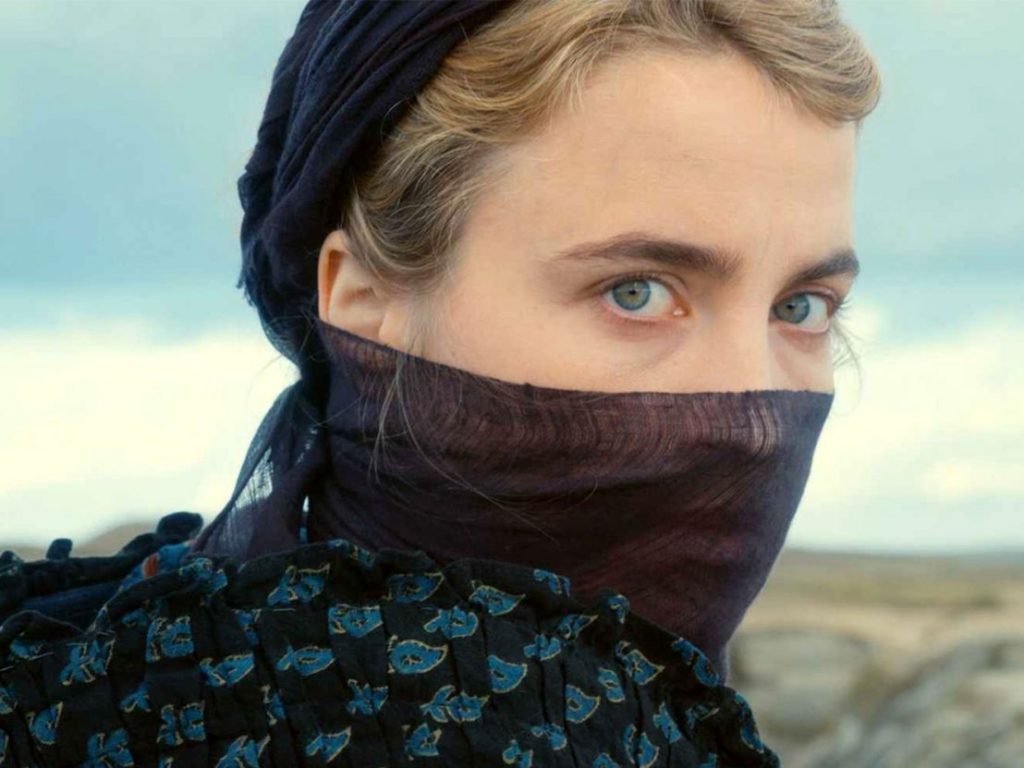Portrait of a Lady on Fire Guardian Review
[caption id="attachment_33783" align="alignnone" width="1024"] Credit: lwlies.com[/explanation]
Credit: lwlies.com[/explanation]
Madeline Pritchard Scientific discipline & Tech Editor
A moving picture made by a woman who is very much on fire herself.
"Men wait at women. Women watch themselves being looked at." And so goes John Berger's clarification of the male gaze in the seminal Ways of Seeing. In recent years, the female person gaze has been applied occasionally to men — in films such as Claire Denis' Beau Travail , for case — merely the male person gaze pervades in representations of women. In part, this is considering female person directors find information technology so hard to secure funding, especially for female person-centred projects, and in part is considering the majority of established female directors are heterosexual. Portrait of a Lady on Fire , and so, in spite of its fairly traditional structure, is something rare and different — a lesbian love story directed by a lesbian (the incredible Céline Sciamma), which exists as separately equally possible from the world of masculinity.
Berger also says the following: "The surveyor of woman in herself is male: the surveyed female." Indeed, our protagonist Marianne's (Noémie Merlant) original purpose is to replicate the male person gaze — she is hired to paint a portrait of Héloïse (Adèle Haenel) to exist sent to her betrothed, far away in Milan. Since Héloïse rejects the match, Marianne must watch her while acting every bit her companion, but able to paint in secret. When Marianne finally divulges her true purpose, Héloïse says, "that explains your looks", and mayhap it does, initially. But attending leads to love, and love leads to attention; once she falls for Héloïse, Marianne destroys what she has created nether that guise, and begins again, both lengthening their fourth dimension together and allowing her to produce a piece of work that truly reflects who Héloïse is.
Marianne and Héloïse initially take up the traditional artist and muse human relationship, but while Marianne has been watching Héloïse, Héloïse has been watching Marianne — she knows Marianne every bit well as Marianne knows her, and we see that the want flowing between these women is reflective and equal. Héloïse somewhen becomes a collaborator of Marianne'south as much as her muse. In one of the most arresting sequences of the pic, she re-stages a previous scene inside the studio and asks Marianne to pigment it — taking upward the position of director to Marianne'south cinematographer.
Possibly this film is partly a reflection of Adèle Haenel and Céline Sciamma's relationship off-screen — Haenel has led half of Sciamma's films, and they dated for four years, breaking up shortly before making Portrait of a Lady on Fire . Certainly, this film belongs to Haenel — as Marianne focuses on Héloïse, so does the camera, and we fall for Héloïse along with her. Haenel's performance is all in her microexpressions — a little pout, a slight upturn in the corners of her rima oris. When she finally properly smiles, it'southward like watching the sunday come out. Noémie Merlant is also remarkable as Marianne — without the dissimilarity of her openness and expressiveness, Haenel might but seem moody, rather than mysterious.
The family servant, Sophie ( Luàna Bajrami), is close with both Marianne and Héloïse — Marianne acts as the span, being both an employee of the household and Héloïse's companion, but a real friendship is built between the three women. In this business firm, on this island, these women take fabricated a kind of matriarchal utopia for themselves. This film is set effectually a hundred years prior to the French Revolution, but these women are experiencing something of that revolutionary spirit — liberté, egalité, sororité , perhaps. Withal, there's never any chance that Marianne and Héloïse'south story might have a traditionally happy catastrophe — the outside world must eventually find its way in, and it would exist incommunicable for them to live openly as lovers in their time.
The thesis of the film, for me, is "don't regret, remember" — we follow their romance from its beginning to its inevitable end, but we must live in the retentivity instead of wallowing in the loss. Both women take with them parts of the other; in the epilogue, Marianne comes across little signs from Héloïse, their love echoing through their lives. The concluding, stunning scene is one of the most powerful endings to a film I've ever seen, reminiscent of both Telephone call Me Past Your Name and The Historic period of Innocence — ii other tales of doomed beloved — but for me, fifty-fifty more affecting.
Source: https://glasgowguardian.co.uk/2020/04/25/review-portrait-of-a-lady-on-fire/
Belum ada Komentar untuk "Portrait of a Lady on Fire Guardian Review"
Posting Komentar